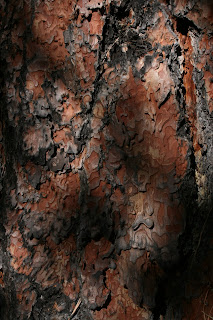This is a picture of a can lying on the rocks of the desert floor high on the Colorado Plateau. Cans were first widely used for food preservation in the late 1800s. The first automated can making machinery was introduced in the 1880s and 1890s. The above can is not likely a beverage can because the top has been completely removed. Even though the can is probably mostly or all steel, it has very little evidence of deterioration due to the super dry environment. From the seam and the type of can, this one has probably been up there in the desert for more than fifty years. Undisturbed, that can will probably still be evident for another fifty or so years.
We used to shoot at cans, throw rocks at cans and generally kick them and throw them around the countryside. There was little or no concern for the "environment." The environment included rusty old cans. If we used a can out in the desert, we would squash it flat and put it under a rock. We figured that it would rust away eventually and it was only iron anyway. It wasn't until aluminum cans came on the scene that we realized that these things would probably last forever in the desert and we started packing everything out that we could carry.
Notice that the can is almost the same color as the rocks. There is a reason. The rocks contain iron oxide or rust. So it is only natural that they would be the same color.










